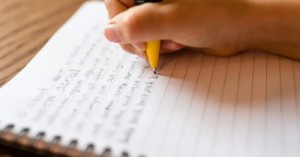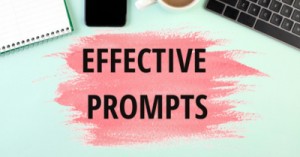Reflections are powerful tools for growth, learning, and connection. Whether used in education, professional practice, or personal journaling, a strong reflection goes beyond recounting events—it captures authentic experiences, explores emotions, and identifies lessons that shape future actions. This checklist is designed to help writers and evaluators ensure that reflections are meaningful, structured, and impactful. It can be used by students, educators, colleagues, or anyone seeking to deepen their reflective practice.
Evaluation Criteria
1. Authenticity and Depth
- Offers genuine and honest observations rather than superficial commentary
- Explores thoughts, feelings, and insights with vulnerability and sincerity
- Demonstrates self-awareness and openness to learning
2. Specificity and Examples
- Includes concrete anecdotes, experiences, or scenarios to illustrate points
- Uses vivid details that make the reflection relatable and memorable
- Connects examples directly to insights or lessons learned
3. Clarity and Structure
- Organized in a logical sequence (beginning, middle, conclusion)
- Ideas flow smoothly without repetition or confusion
- Uses clear language that is accessible to the intended audience
4. Engagement and Tone
- Written in an authentic, conversational style that feels personal and inviting
- Captures emotion, enthusiasm, or curiosity effectively
- Avoids overly formal or detached language unless context requires it
5. Growth and Learning
- Highlights moments of perseverance, challenge, or discovery
- Identifies what was learned from successes and setbacks
- Demonstrates progress in thinking, skills, or emotional awareness
6. Relevance and Purpose
- Aligns with the intended purpose (e.g., inspiring, documenting, evaluating)
- Speaks meaningfully to the target audience (students, parents, colleagues, self)
- Connects personal insights to broader goals or contexts
7. Actionable Takeaways
- Provides lessons, strategies, or observations that can guide future actions
- Identifies areas for improvement or growth
- Suggests practical steps or mindset shifts for moving forward
8. Creative Expression
- Uses storytelling, imagery, or unique formats (poems, visuals, metaphors) to enrich the reflection
- Balances creativity with clarity and purpose
- Engages the reader through originality without losing focus on the core message
Reflection is not just about looking back—it’s about moving forward with greater clarity, empathy, and intention. By using this checklist, writers and evaluators can ensure that reflections are not only authentic and creative but also purposeful and actionable. The true power of reflection lies in its ability to transform experiences into insights and insights into growth.
Whether you’re a student documenting your learning journey, an educator guiding reflective practice, or a professional seeking deeper self-awareness, this checklist serves as a compass. Let it remind you that every reflection is an opportunity to pause, connect, and grow.
Further Reading
Educator's Guide To Critical Reflections
Practical Examples Of Critical Reflections In Early Childhood
How To Write A Critical Reflection In Early Childhood
Ideas to Organise and Document Critical Reflections
Q: How Can I Create My Own Critical Reflections?
Critical Reflection Made Simple: Tools and Prompts
Q: How Can Educators Make Reflections Meaningful?







 Here is the list of the EYLF Learning Outcomes that you can use as a guide or reference for your documentation and planning. The EYLF
Here is the list of the EYLF Learning Outcomes that you can use as a guide or reference for your documentation and planning. The EYLF The EYLF is a guide which consists of Principles, Practices and 5 main Learning Outcomes along with each of their sub outcomes, based on identity,
The EYLF is a guide which consists of Principles, Practices and 5 main Learning Outcomes along with each of their sub outcomes, based on identity, This is a guide on How to Write a Learning Story. It provides information on What Is A Learning Story, Writing A Learning Story, Sample
This is a guide on How to Write a Learning Story. It provides information on What Is A Learning Story, Writing A Learning Story, Sample One of the most important types of documentation methods that educators needs to be familiar with are “observations”. Observations are crucial for all early childhood
One of the most important types of documentation methods that educators needs to be familiar with are “observations”. Observations are crucial for all early childhood To support children achieve learning outcomes from the EYLF Framework, the following list gives educators examples of how to promote children's learning in each individual
To support children achieve learning outcomes from the EYLF Framework, the following list gives educators examples of how to promote children's learning in each individual Reflective practice is learning from everyday situations and issues and concerns that arise which form part of our daily routine while working in an early
Reflective practice is learning from everyday situations and issues and concerns that arise which form part of our daily routine while working in an early Within Australia, Programming and Planning is reflected and supported by the Early Years Learning Framework. Educators within early childhood settings, use the EYLF to guide
Within Australia, Programming and Planning is reflected and supported by the Early Years Learning Framework. Educators within early childhood settings, use the EYLF to guide When observing children, it's important that we use a range of different observation methods from running records, learning stories to photographs and work samples. Using
When observing children, it's important that we use a range of different observation methods from running records, learning stories to photographs and work samples. Using This is a guide for educators on what to observe under each sub learning outcome from the EYLF Framework, when a child is engaged in
This is a guide for educators on what to observe under each sub learning outcome from the EYLF Framework, when a child is engaged in The Early Years Learning Framework describes the curriculum as “all the interactions, experiences, activities, routines and events, planned and unplanned, that occur in an environment
The Early Years Learning Framework describes the curriculum as “all the interactions, experiences, activities, routines and events, planned and unplanned, that occur in an environment


